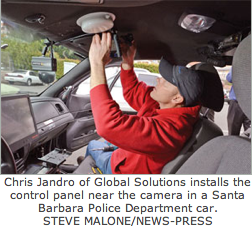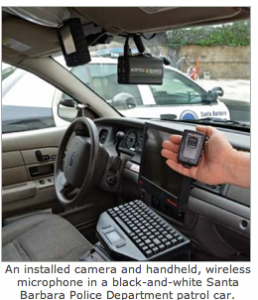Recent Posts
- Get HOMICIDE in four editions. Rated No.1 among The Five Best Crimes Biographies of All Time
- Peter Lance Biography
- HuffPost: DOJ report on MISSBURN case leaves out key detail: I.D. of the Mafia killer who broke the case for Hoover’s FBI
- On Halloween in 1994 CBS aired a new take on Orson Welles’ radio classic “War of The Worlds.” With 225,000+ views, it’s now become a YouTube cult favorite as well.
- Jason Leopold calls TRIPLE CROSS a “9/11 masterpiece”
Archives
- November 2025
- October 2025
- September 2025
- March 2025
- February 2025
- January 2025
- December 2024
- November 2024
- October 2024
- July 2024
- June 2024
- March 2024
- January 2024
- November 2023
- June 2023
- March 2023
- February 2023
- December 2022
- August 2022
- July 2022
- March 2022
- February 2022
- January 2022
- December 2021
- August 2020
- July 2020
- June 2020
- February 2020
- January 2020
- November 2019
- September 2019
- April 2019
- February 2018
- January 2018
- December 2017
- November 2017
- September 2017
- June 2017
- April 2017
- February 2017
- January 2017
- December 2016
- November 2016
- October 2016
- September 2016
- August 2016
- July 2016
- June 2016
- May 2016
- April 2016
- March 2016
- February 2016
- January 2016
- December 2015
- November 2015
- October 2015
- September 2015
- August 2015
- July 2015
- June 2015
- May 2015
- March 2015
- February 2015
- January 2015
- December 2014
- November 2014
- July 2014
- June 2014
- May 2014
- April 2014
- March 2014
- January 2014
- December 2013
- November 2013
- October 2013
- September 2013
- August 2013
- July 2013
- June 2013
- May 2013
- April 2013
- March 2013
- February 2013
- January 2013
- December 2012
- November 2012
- October 2012
- September 2012
- August 2012
- July 2012
- June 2012
- May 2012
- April 2012
- January 2012
- December 2011
- June 2011
- April 2011
- March 2011
- February 2011
- January 2011
- November 2010
- October 2010
- March 2010
- August 2009
- November 2006
- November 2004
- October 2003
- September 2003
- February 2000
Categories
- 1000 Years for Revenge
- ABC's Path to 9/11 issue
- Ali Mohamed
- Ali Mohamed revelations
- Anwar al-Awlaki
- ARCHIVES
- awards
- bio
- BIOGRAPHY
- BOOK TV C-SPAN2
- BOOK WRITING
- BOOKS
- Colombo family "war"
- Commentary
- DUI investigation
- Emad Salem investigation
- FBI ORGANIZED CRIME
- Featured
- FICTION
- First Degree Burn
- Fitzgerald censorship attempt
- Fitzgerald censorship scandal
- Fox News
- Gotham City Insider
- Gregory Scarpa Jr.
- Gregory Scarpa Jr.
- Gregory Scarpa Sr.
- Harpercollins
- HUFFINGTON POST
- INVESTIGATIONS
- Khalid Shaikh Mohammed
- MAGAZINE ARTICLES
- Major Hasan Fort Hood massacre
- MEDIA COVERAGE
- Meier Kahane Assassination
- Meir Kahane assassination
- Murder Inc.
- Nat Geo whitewash
- NEWSPAPER REPORTING
- NOVELS
- Oklahoma City bombing
- Omar Abdel Rahman
- OPERATION ABLE DANGER
- POLICE CORRUPTION
- Produced
- R. Lindley DeVecchio
- Ramzi Yousef
- Ramzi Yousef sting 302's
- REPORTING & ANALYSIS
- RESEARCH
- Santa Barbara News-Press
- SCREENWRITING
- Stranger 456
- Stranger 456
- teleplays
- Tenacity Media
- Triple Cross
- Triple Cross
- TV NEWS COMMENTARY
- Uncategorized
- videos
- WIKIPEDIA
Santa Barbara Police Install Video in Units After News-Press DUI Series
System Expected to be Running by March.
More than a year after the Santa Barbara County Grand Jury called for all county law enforcement agencies to install video cameras in their patrol vehicles, the Santa Barbara Police Department’s 28 black-and-white patrol vehicles should be outfitted with dash cameras and new computers by early next week.
Once installers finish equipping the fleet with the $208,000 WatchGuard Video cameras, the department will finish updating its video policy and procedure, test the system and train its more than 140 officers, said spokesman Sgt. Riley Harwood.
Officers should be trained and the video system up and running by March, Sgt. Harwood said.
“We’re working as fast as we can,” he said.
About two months ago, the City Council approved buying the front- and rear-facing cameras with funds already budgeted for fiscal year 2012-13.
“It’s money well spent,” Mayor Helene Schneider told the News-Press on Tuesday. “I’m very pleased that this is going to be a part of our regular operational procedure in the Police Department. I think this is going to help law enforcement and enhance public safety throughout the city.”
Following reporter Peter Lance’s DUI investigative series, the Santa Barbara County Grand Jury released its report calling for video cameras in all county law enforcement patrol vehicles.
At the time, the Santa Barbara and Guadalupe police departments were the only agencies in the county without video capability in all patrol cars.
Mr. Lance said Tuesday the cameras will only be useful if police follow the right procedures.
“The new cameras being installed in the patrol cars will only be effective in stopping misconduct by police if several factors are in place: First, there should be both audio and video of all rolling patrols at all times,” Mr. Lance said Tuesday. “Second, it is imperative that the SPBD issue regulations that all field sobriety tests be conducted within audio and video range of the dash cam units.
“The cameras are only as effective as their ability to watch the police as they conduct their duties,” Mr. Lance said. “The installation in the 28 units is a victory, but it will be a limited one if the aforementioned protocol isn’t put in place.”
One of the first test video cameras in a Santa Barbara Police Department patrol vehicle captured the controversial Oct. 21, 2011, DUI arrest of Tony DeNunzio in Loreto Plaza. Some witnesses accused police of using excessive force. Police accounts described Mr. DeNunzio as not complying with an officer’s verbal commands to get back into his vehicle.
The District Attorney’s Office declined to file any charges with regard to excessive force by the arresting officer, and charged Mr. DeNunzio with driving under the influence.
Sgt. Harwood said the operational policy likely will include what types of incidents officers should record, when staff should check the equipment, and how officers should handle the wireless microphone.
On Monday, a crew started installing the HD cameras, faster processors, higher quality modems and new keyboards two cars at a time in the Police Department’s parking lot.
It takes about 21/2 hours to outfit one car. Outfitting the fleet, including three Animal Control Division trucks, should take five to six days, Sgt. Harwood said.
“It’s definitely something that will be beneficial for us and something the public expects,” he said.
The department will likely spend between $5,000 and $6,000 annually on system maintenance and needs one full-time employee to manage the cameras, video footage and records requests, Sgt. Harwood said.
He said the department has no plans to hire additional personnel at this time, but he declined to say how the position would be covered.
While the cameras are always on, storing 24 hours worth of material at any one time, certain events, such as officers activating the flashing lights on top of the car, unlocking a rifle or turning on the microphone, can trigger the cameras to start a recording that will automatically and wirelessly download to servers at the police station, rather than just being stored on the camera.
The 24-hour video bank stored on the cameras gives officers “a unique ability to go back in time” and see something “we don’t know is significant at the time,” Sgt. Harwood said.
Attorney Darryl Genis, who represented Mr. Lance in the DUI case, said allowing officers control of recording is a concern.
“What bank or other business allows its rank and file employees to control when the camera monitoring business activities is on or off? The camera is always on,” said attorney Darryl Genis. “There must be a stringent protocol for the collection, storage, preservation, review and use of the digital audio/video record by both police and public citizens, as needed.”
This is not the first time the department has used cameras in patrol cars. About half of the department’s cars had cameras for three to four years starting in the late 1990s, Sgt. Harwood said.
He described the previous VHS units as large and cumbersome.
“It’s not a system we were able to maintain. The miniaturization of the technology (now) is a plus,” he said as he held the system’s microphone – a small pager-like device – in the palm of his hand.
When events happen outside the range of the camera, the HD microphone can record sound as far as 1,400 feet away, Dennis Diaz, police information technology manager, told City Council members at their Dec. 4 meeting.
The HD video will be able to read license plates as far as 38 feet away, compared to regular video that can read license plates at 15 feet, Mr. Diaz said.
In addition, the video system has event tracking, which can chronologically track police car activity, including the car’s speed and when lights and sirens are turned on and off, he said.
email: eparker@newspress.com



Recent Comments